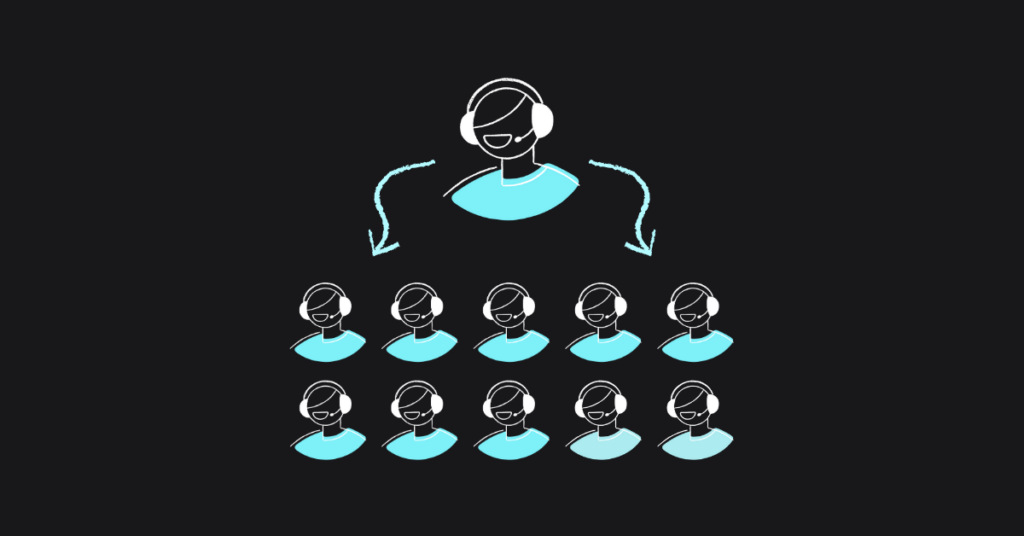
Table of contents
Even as little as 10 years ago, few people expected VoIP technology to gain as much traction as it has in either the consumer or enterprise segment. But the reality is that VoIP is here and it is here to stay. Whether or not businesses want to upgrade or switch over to VoIP is only a matter of time as the technology is set to become the worldwide standard over the next decade.
While some enterprises may want to wait for specific reasons – lack of resources, waiting for current equipment to reach end-of-life, for contracts to expire or even for security/legislative restrictions – most organizations have already switched or are in the process of doing so. Before going full steam ahead and purchasing equipment or subscribing to hosted VoIP services, the business (managers, employees, C level executives etc. and not just the IT team) should understand the technology and its requirements for effective deployment.
What is VoIP?
Practically everyone knows what VoIP stands for – Voice over Internet Protocol. While the acronym may be well known, the underlying technology is not so familiar to people. At the most basic level, VoIP simply means that phone calls or rather voice calls are routed over the Internet instead of through dedicated copper lines/PSTN. The differences between the regular landline and VoIP run deeper than that but the underlying network is the fundamental distinction.
It immediately becomes apparent that VoIP requires high-speed broadband Internet and bandwidth since calls have to share the network with other Internet applications like email, collaboration, video chat, instant messaging etc. In fact the growth of VoIP has closely followed the growth of Internet penetration in various countries and the availability of faster speeds.
Disadvantages of VoIP
The list of VoIP advantages is pretty long but that doesn’t mean the technology has no drawbacks. Some of the drawbacks are nothing more than obstacles that will be solved by the passage of time but others may require changes in policies or more innovation in the VoIP industry. For now, the twin requirements of Internet and power for VoIP means that they are difficult to deploy in far-flung locations, rural areas or in less developed parts of the world.
Some consumers can get by with mobile VoIP applications but business enterprises cannot possibly depend on patchy VoIP service in such places. In countries such as the United States or European nations, emergency dialing capabilities are also not quite up to par with the PSTN although vendors are implementing various solutions. VoIP has still not replaced the PSTN completely, so its reliability during emergencies or disasters has not yet been tested.
Advantages of VoIP technology
VoIP offers many advantages especially from a technical perspective for administrators, business managers and IT teams.
For administrators
Businesses have been using PBX solutions for enterprise communication on the PSTN. It has worked reliably for decades and not much was inherently wrong with it. Nevertheless VoIP offers many advantages, enough that many businesses upgraded as soon as they could. As far as administrators are concerned, VoIP systems are easier to set up, configure and deploy when compared to traditional PBX boxes.
Given the trend towards hosted services, most businesses do not have to worry about physical equipment at all. Administrators can change settings, enable/disable features, add numbers/users/lines or other resources etc. through a simple web-based dashboards. There is no more messing around with arcane commands, antiquated interfaces or cumbersome programming.
For business managers
The lower price of VoIP systems meant that business managers barely needed any convincing before upgrading to VoIP. Once the initial wrinkles of deployment and configuration had been ironed out, businesses began to adopt VoIP at astonishing speed partly because of the price. Apart from the fact that very little initial investment is required, the call charges for local and international calls itself are drastically reduced with VoIP.
At the other end of the spectrum, VoIP enables productivity gains in today’s mobile and always connected business environment. The technology allows employees to communicate with each other using any device, regardless of location. By bringing all collaborative workflows into a single network, there is less switching back-and-forth between the desk phone, computer and smartphones for workers.
In addition, VoIP integrates multiple channels seamlessly. For instance faxes can be sent digitally, voicemails can be accessed in the email inbox, video chat and instant messaging can happen simultaneously and customers can call a business directly from their website.
For IT departments
IT professionals and departments in enterprises throughout the world find their work much easier with the introduction of VoIP. No longer do companies need a separate team for managing the internal data network and equipment while another manages the phone system. Everything is consolidated into a single enterprise wide infrastructure which makes management and maintenance much less of a hassle.
Another boon for IT teams is the fact that VoIP utilizes standard Internet-based protocols for everything from session management to call routing. This makes VoIP a perfect stepping stone for further deployment of unified communication suites. Another aspect of the technology is that interoperability is practically a given. More providers are launching services that can connect to enterprise applications such as ERP or CRM systems.
Enterprise voice communication systems have long existed as a silo without any connections to the rest of the business channels. Most features beyond making and receiving calls required either expensive hardware, extensive maintenance contracts from carriers or even custom implementations of various pieces of software. VoIP erases not only those boundaries but brings together all the communication systems in one place allowing for seamless transition between voice, video, text and any other form of communication that might manifest in the future.
At this point VoIP has no serious contenders in the future is not far off when it becomes the de facto standard much like the PSTN used to be a decade ago. However given the current pace of technology innovation and changes in the industry, VoIP as we know it may well be unrecognizable in 10 years.
More from the blog
Want to improve your business communication?
Unlock enterprise-class call center power at affordable prices – no hardware, no delays, no surprises!






